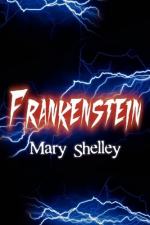|
This section contains 1,069 words (approx. 4 pages at 300 words per page) |

|
Frankenstein and the Gothic Genre
Summary: In her novel Frankenstein, Mary Shelley successfully used aspects of Gothic literature to evoke feelings of fear, suspense, dread, disgust, and horror. Through the presence of techniques such as heightened emotions, pathetic fallacy, symbolic characters, and juxtaposition of two scenes with opposite connotations, the novel describes an atmosphere of terror that stays true to the Gothic genre.
In Frankenstein, author Mary Shelley successfully uses the Gothic Genre to evoke feelings of dread, disgust and horror in the responder. The Gothic novels are called "tales of terror" which explore powerful extremes of emotions, the unknown, the supernatural and focus on doom, destiny and fate. Frankenstein is a historical Gothic text that knowledgeably stays true to the genre through a variety of gothic conventions.
An example of one of these techniques successfully used is juxtaposition of the first two scenes in the chapter highlighting the importance of setting. In the first paragraph the setting is described as a "lovely scene of waters, wood and mountains" while the following paragraph describes an environment where "the wind, which had fallen to the south, now rose with great violence in the west" and "a heavy storm of rain descended." By juxtaposing these two situations with opposite connotations Shelly creates an...
|
This section contains 1,069 words (approx. 4 pages at 300 words per page) |

|


